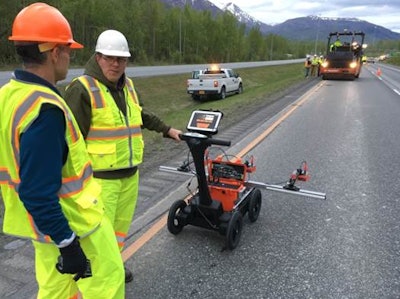Structural Supports, Conduit Lines, Reinforcement Bars, Pipes, Utility Lines, Voids, Post-Tension Cables, Slab Thickness, Depth to Targets . . .
These are all factors that construction workers need to be aware of when drilling, cutting, or breaking up concrete. In order to avoid these hazards, ground penetrating radar (GPR) can be implemented. By downloading this infographic, you will be learning more about...
Whether you’re just starting out in the industry or are a seasoned professional, this infographic — created by Concrete Contractor — provides the at-a-glance ability to quickly understand the Importance of Ground Penetrating Radar, while also offering practical tips for application.
Structural Supports, Conduit Lines, Reinforcement Bars, Pipes, Utility Lines, Voids, Post-Tension Cables, Slab Thickness, Depth to Targets . . .
These are all factors that construction workers need to be aware of when drilling, cutting, or breaking up concrete. In order to avoid these hazards, ground penetrating radar (GPR) can be implemented. By downloading this infographic, you will be learning more about...
- The overview of what GPR technology is and its benefits for the industry
- Best practices and general rules to follow
- What types of hazards can arise in concrete and how to avoid them using GPR technology
- How frequency affects depth and resolution
- What types of certifications and resources are available to implement GPR technology
- And more!
Whether you’re just starting out in the industry or are a seasoned professional, this infographic — created by Concrete Contractor — provides the at-a-glance ability to quickly understand the Importance of Ground Penetrating Radar, while also offering practical tips for application.
We'd like to thank Bruno Silla of Geophysical Survey Systems Inc. (GSSI) and Ryan Hammer of Hard Rock Technologies, who are experts in the subject matter, for reviewing this informational flyer.
*Disclaimer: This flyer is meant for informational purposes only. Consult the CDSA Best Practice document for further overview and additional methodology of the technology.














